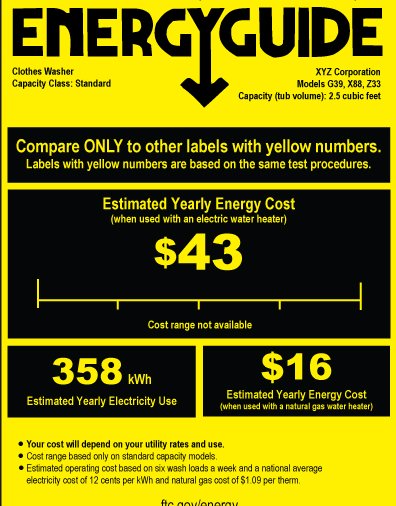When purchasing a new electrical appliance, it is essential to consider the cost of running the product you have in mind. Modern technological advancements, as well as efficiency innovations, mean that you could experience the best from your machine. And you can do this without affecting your monthly budget.
Understanding the energy efficiency ratings on your items helps you to control a lot of operating costs at some and also make smart decisions when purchasing new appliances. The general energy efficiency of any home appliance relates to how much energy your machine consumes versus how much energy it receives.
Before your shop for new energy efficient appliances or even windows and skylights, you need to learn about their energy performance ratings. You can make use of their energy performance ratings to tell their potential for losing or gaining heat, and even transmitting sunlight into any home.
Heat Loss and Gain
Windows, skylights, and doors can lose heat or gain heat through:
- Air leakages around or through them.
- Heat radiation into a house and out from people, furniture or interior walls.
- Direct conduction through the glass, frames, or door.
Energy labeling
Certain electrical goods are required to display an energy label. The entire labeling scheme cover a significant number of an extensive range of electrical appliances which includes freezers, fridges, washing machines, light bulbs and television sets. The label displays a comprehensive summary or that product’s impact on its environment.
The products are rated at least efficient to most efficient. This label also shows energy consumption for a year and shows information relevant to the product like noise levels for appliances like washing machines, water consumption, and sizes for appliances like television sets.
When shopping for new electrical appliances like refrigerators or washing machines, take note of the annual electrical cost displayed on the energy label. The label includes an indicator for that product’s relative ranking against other competing models of similar products.
If you have knowledge of your local electricity price – usually shown in your monthly bill – then you can use average hour consumption hours as seen on the label to ascertain a more precise calculation it that item’s operating cost for your location.
Why Does Product Energy Efficiency Matter?
An energy efficient appliance consumes less energy to achieve about the same performance as other models with similar size or capacity. If an appliance is more efficient than others, it will consume less electricity and save the owner a lot of when it is being used.
Why Are Equipment And Appliances Labeled?
These products are labeled so that buyers can factor in how much it will cost them to run it and that helps them in deciding which model of any appliance to buy. Energy rating works in tandem with minimum energy standards. These minimum standards upgrade the average product’s efficiency by increasing the performance of their least efficient product.
Which Products Should Be Labeled?
In local retail stores. The energy efficiency ratings are usually displayed on the following products.
- Washing Machines: The labels on washing machines show how much water and energy the washing machine typically consumes. It shows the yearly water consumption, capacity, spin-drying efficiency, and noise emissions for different load quantities. Models with big capacities must have a high rating.
- Clothes Dryers: The labels on these products show how much energy the washing machine consumes, annual water use, capacity, spin dry efficiency, and noise emissions for various load sizes.
- Televisions: Televisions consume a significant share of a household’s total energy. As a rule, the larger a television is, the more energy that it will be likely to take up with some television screens more efficient than others. For instance, LED-backlit LCD televisions are fading out while plasma screens are known for consuming a fair amount of energy.
- Freezers and Refrigerators: refrigerators, freezers and similar appliances are probably the biggest consumers of energy in the home. This is primarily because they’re left to run consistently for a long period of time. Having this in mind, it makes a lot of sense to go for an energy efficient as a wise investment as it can help to cut your electricity bill. The label on these appliances displays information about the storage volume, frozen storage volume, and their noise levels. Some brands have done a little more to add custom energy-saving techniques.
- Light bulbs and lighting: making a switch from traditional light bulbs to their energy saving equivalents can keep your electricity bills at a manageable level. These traditional light bulbs with 100, 60, and 40 watts have their energy-saving versions at approximately 15-20W, 10W, and 8W. Using an 8W bulb instead of 40W cuts your electricity use by up to 20% for that single bulb.
- Dishwasher: Dishwashers are increasingly common in many households, and it is becoming more water and energy efficient. Energy efficiency of dishwashers are shown in their kilowatts per year. The ratings obtained by testing the energy used up when washing dishes and tableware.
Other appliances in the home that need to be labeled include Air conditioners, windows, computer monitors, kettles, coffee machines, telephones, and batteries. Sometimes, top-rated models may cost a bit more to purchase. But keep in mind that cheaper ones could cost you more to use for a long time.
If you think of the cost of running or using an appliance as an alternative price tag, you might find it more comfortable to decide which appliance or model to buy.
sekolah tinggi ilmu kesehatan ukpm
kebidanan mitra sejahtera jakarta
akademi analis kesehatan muhammadiyah surabaya
akademi kesehatan lingkungan sumsel
akademi kebidanan arta kabanjahe
akademi kebidanan nusantara medan
akademi kebidanan delhus delmed
akper harapan mama deli serdang





